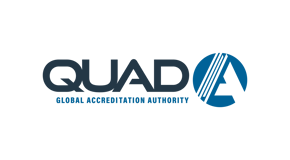As an accreditor, the American Association for Accreditation of Ambulatory Surgery Facilities (Quad A) plays an important role in ensuring patient safety, our mission. Our role typically relates to verifying patients are appropriately screened for risks and the facility can respond to an emergency; however, infection control is a critical component of accreditation that helps protect the entire community from transmission of diseases, such as COVID-19. Additionally, we are sensitive to the integration of all healthcare providers into a community system capable of responding to widespread emergencies. To that end, it is helpful to note early lessons from the COVID-19 pandemic.
Infection control is essential. We often think in terms of surgical site or healthcare acquired infections, but general disease transmission also poses a significant risk to the patient and community. Studies routinely demonstrate providers worldwide do not regularly observe recommended hand hygiene practices. Hand hygiene, and other safety measures like surface and environmental cleaning, and personal protective equipment are critical to reduce the risk of transmission of COVID-19 and others. Current shortages may preclude routine infection control procedures and require facilities to employ temporary measures (such as alternative facemasks) approved by authorities such as World Health Organization (WHO) and Centers for Disease Control and Prevention (CDC) in the United Sates.
Considering COVID-19, facilities must:
- Have an infection control policy and emergency plan including, among other hazards, COVID-19
- Screen for symptoms like cough, fever, runny nose, or throat pain before and upon arrival and develop isolation procedures; patients over 50, with symptoms or co-morbidities should have elective cases postponed or be provided with protective measures for non-elective cases
- Emphasize environmental cleaning for public areas and surfaces to be under constant cleaning with alcohol; exam rooms to be cleaned after each patient; and removal of high touch items, such as reading material
- Encourage staff to report symptoms and be allowed sick leave if staff or a household member becomes a known or suspected COVID-19 case
- Post signs about COVID 19: “Stop The Spread”; cough and sneeze etiquette; and hand hygiene
- Supply tissue paper, hand sanitizer, and personal protective equipment such as masks, gloves, and eyewear for staff and patients; if unable to provide, consider shutting down
- Only provide services if adequate staffing is maintained
- Plan for an orderly shut-down, with contingencies to check sensitive systems such as sterile storage and refrigerated medications
While infection control is critical to mitigating transmission, emergency preparedness is essential to managing outbreaks such as COVID-19 and ensuring the best possible outcome. Quad A expects accredited facilities to update their hazard risk assessments and emergency preparedness, to include pandemic response. All healthcare facilities, no matter their location or specialty, are part of the community infrastructure and should consider their roles in responding to the outbreak. Especially in locales with high case volumes where ambulatory facilities have been mandated to close, facilities should consider how to support struggling hospitals. For example, we have heard reports of ventilator shortages impacting the ability to treat patients in Italy. Any center there that has a ventilator should consider contacting hospitals facing a deficit about lending their ventilator to the hospital to treat COVID-19 patients. Alternatively, if your facility is closed, consider opening your facility to the hospital and its personnel to treat and recover patients in your center using your equipment. The added benefit is that such patients would be isolated from the rest of the patient population and reduce the risk of additional transmission. We know that these are concerning times, but facilities like yours, can be instrumental in buttressing the healthcare infrastructure of your respective communities to limit the duration of the pandemic.


